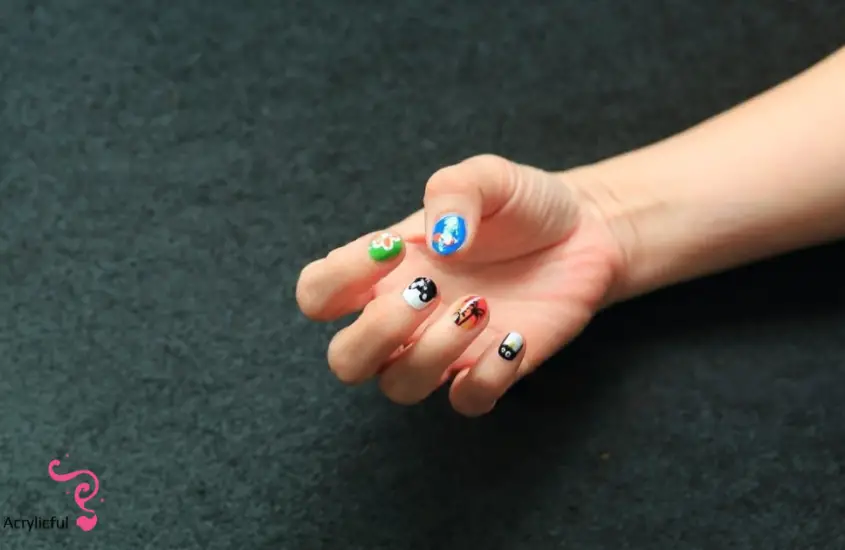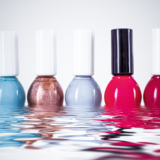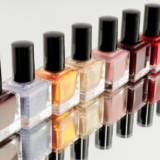Are 10-Year-Olds Allowed to Get Acrylic Nails?

Acrylic nails are popular these days, and it’s not just adults who are following suit. This popular beauty accessory has piqued the interest of children as young as ten. As a parent or guardian, you may be wondering are 10-Year-Olds allowed to get acrylic nails?. This blog will go into detail about this topic, providing you with the information you need to make an informed decision for your child.
I. Why Do Kids Want Acrylic Nails?
Before we get into whether 10-year-olds should have acrylic nails, it’s important to understand why they might be interested in them. Here are a few examples of common reasons:
1. Peer Pressure:
Children frequently want to fit in with their peers. If their friends are getting acrylic nails, they may feel compelled to follow suit in order to feel included.
2. Fashion Trends:
Acrylic nails have become a fashion statement, and children are influenced by what they see in the media and on social media.
3. Self-Expression:
From a young age, children are finding ways to express themselves creatively, and acrylic nails can be viewed as a form of art and self-expression.
II. The Pros and Cons of Acrylic Nails for 10-Year-Olds
Let’s weigh the benefits and drawbacks of allowing 10-year-olds to get acrylic nails:
Pros
1. Enhanced Self-Esteem:
Acrylic nails can make a child feel more confident and beautiful, which can boost their self-esteem.
2. Creative Outlet:
For artistic children, acrylic nails can provide a creative outlet where they can experiment with colors and designs.
3. Temporary:
Acrylic nails are not permanent and can be removed relatively easily, making them a less long-term commitment than some other beauty procedures.
Cons
1. Potential Health Risks:
The use of strong chemicals and adhesives in acrylic nails can be hazardous if not handled properly. Children may be more prone to mishaps or allergic reactions.
2. Maintenance:
Acrylic nails require regular upkeep, including filling and maintenance, which can be time-consuming and costly.
3. Natural Nail Damage:
Improper application or removal of acrylic nails can cause long-term damage to the child’s natural nails.
III. Parental Considerations
Are 10-year-olds allowed to get acrylic nails? You, as a parent or guardian, play an important role in determining whether acrylic nails are appropriate for your 10-year-old. Here are some key considerations:
1. Health and Safety:
Above all, prioritize your child’s health and safety. Examine the risks of acrylic nails and make sure the application is done by a reputable and experienced technician.
2. Age-Appropriate:
Consider whether your child is mature enough to be in charge of acrylic nails. Are they aware of the required maintenance, and can they follow the technician’s care instructions?
3. School Policies:
Confirm any policies regarding nail enhancements with your child’s school. Some schools may have policies prohibiting students from wearing long or decorated nails.
4. Alternatives:
Look into non-toxic, peel-off nail polish or nail stickers as alternatives to acrylic nails. These alternatives offer a safer and more age-appropriate way for children to experiment with nail art.
IV. Tips for a Safe Acrylic Nail Experience
If you decide to let your 10-year-old get acrylic nails, follow these guidelines to ensure a safe and positive experience:
1. Choose a Reputable Salon:
Look into local nail salons and choose one with experienced technicians who prioritize safety and hygiene.
2. Inquire:
Do not be afraid to question the technician about the process, materials used, and potential risks.
3. Aftercare:
Teach your child how to properly care for their acrylic nails. This includes not biting or picking at them and using moisturizer to keep dry skin at bay.
4. Regular Check-Ups:
To ensure that the acrylic nails stay in good condition, make routine appointments for nail maintenance.
5. Pay Attention to Your Child:
Maintain open lines of communication with your child. Take their concerns seriously if they express discomfort or want the acrylic nails removed.
V. Designs and Nail Art Ideas
Acrylic nails serve as a blank canvas for creative designs. Here are some popular children’s ideas:
1. Glitter Nails:
Use glitter to add a sparkle to your child’s acrylic nails. They can mix and match colors and shapes to create a dazzling effect.
2. Character Nails:
Let your child decorate their nails with their favorite cartoon characters or superheroes. Nail artists can create intricate designs based on their interests.
3. Pastel Colors:
Pastel colors are ideal for younger children. These soft, muted colors can make their nails look cute and appropriate for their age.
4. French Tips:
A classic French tip design with a twist can be a subtle yet stylish choice. Customize the colors and add small decorations for a one-of-a-kind look.
5. Nail Stickers:
Using nail stickers, you can easily create fun designs without the need for elaborate painting. They are available in a variety of themes, ranging from animals to flowers.
VI. Research on Acrylic Nails for Kids
While there is limited research on acrylic nails for children, some studies have looked into the safety of nail enhancements in general. According to a study published in the “Journal of Cosmetic Dermatology,” proper ventilation in nail salons is critical to reducing exposure to potentially harmful fumes from nail products. To protect their child’s respiratory health, parents should choose salons with good ventilation systems.
Furthermore, a study published in the “International Journal of Environmental Research and Public Health” emphasized the significance of technician education and training in preventing allergic reactions and infections associated with nail enhancements. Inquire about the technician’s qualifications and training before allowing your child to get acrylic nails to ensure a safe experience.
Conclusion
Are 10-year-olds allowed to get acrylic nails? Whether or not to allow a 10-year-old to get acrylic nails is a personal choice. It should be made after careful consideration of the potential advantages and disadvantages, as well as the child’s readiness for the responsibility. If you are concerned about acrylic nails, prioritize your health and safety and look into age-appropriate alternatives. Finally, nurturing your child’s self-esteem and creativity is critical, and there are numerous ways to do so while also considering their well-being. Acrylic nails, when used properly, can be a fun and creative outlet for your child’s self-expression.








